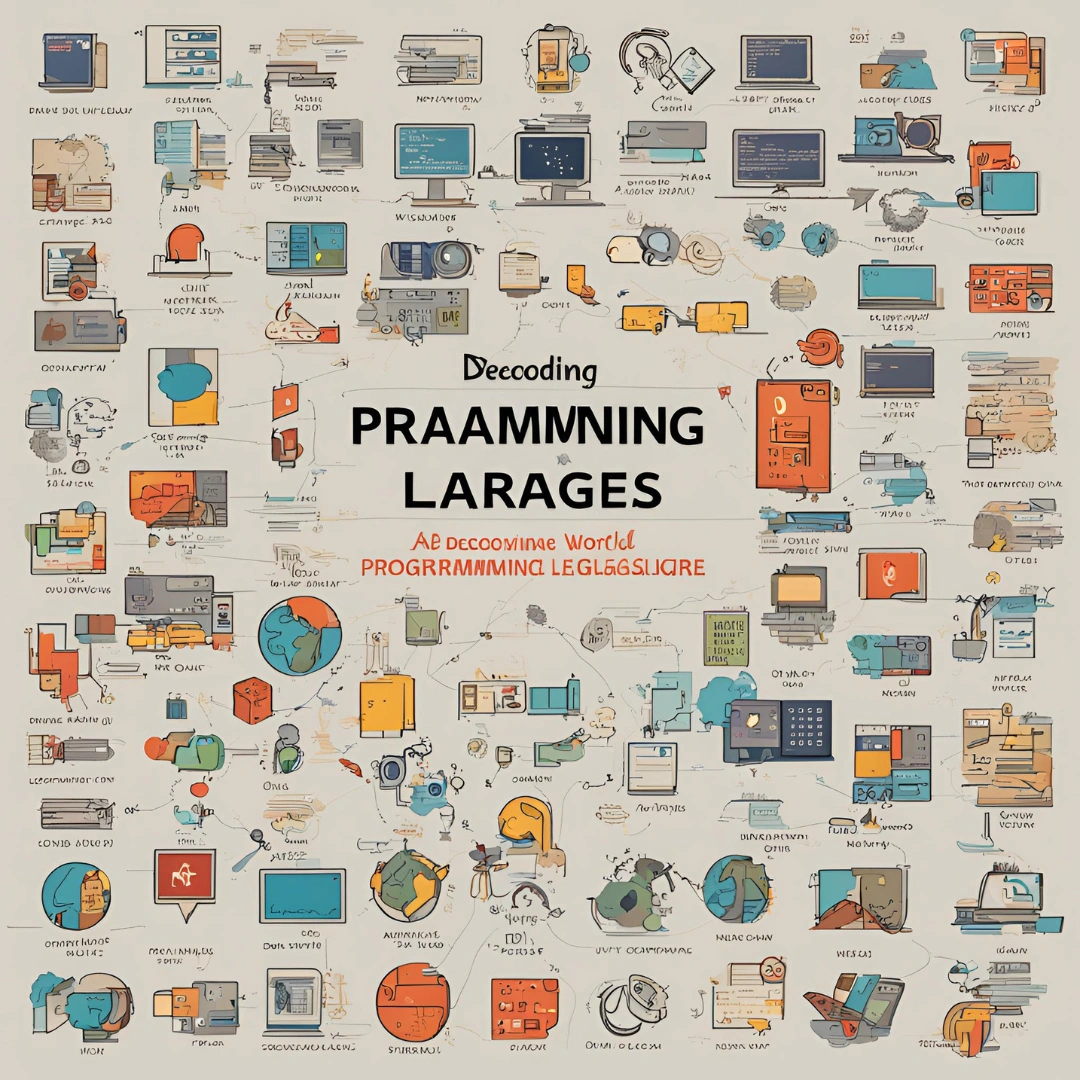Introduction:
Programming languages are the fundamental building blocks of technology in the digital age, allowing programmers to create the websites, apps, and software that run our daily operations. Every programming language, from Python's intricacy to HTML's simplicity, has its own syntax, function, and advantages. We'll explore into the intriguing realm of programming languages in this blog, looking at their development, history, and useful uses.
Code powers the digital world in which we live. Every website, application, and game you play has a sophisticated language called programming language behind it. But it might be daunting to choose the best option when there are so many to choose from. This thorough guide acts as your decoder ring, guiding you through the world of programming languages to find the one that best suits your needs.
The Evolution of Programming Languages:
- Machine Language: In the early days of computing, programmers communicated with computers using machine language, which consists of binary code (0s and 1s). While efficient for machines, machine language is difficult for humans to understand and manipulate.
- Assembly Language: Assembly language introduced symbolic representations of machine instructions, making programming more accessible to humans. However, assembly language is still tied closely to the architecture of the underlying hardware.
- High-Level Languages: High-level programming languages, such as Fortran, COBOL, and Lisp, abstract away the complexities of machine code and hardware architecture, allowing programmers to focus on solving problems at a higher level of abstraction.
Understanding the Programming Landscape: A Foundation for Choice
Before diving into specific languages, let's explore some key concepts:
- What are Programming Languages? These are sets of instructions used to communicate with computers. They tell computers what tasks to perform and how to perform them.
- Paradigms: Programming languages are categorized by paradigms, which represent different approaches to programming. Common paradigms include:
- Imperative: Focuses on the steps a computer needs to take to achieve a result (e.g., Python, Java).
- Declarative: Specifies the desired outcome without dictating the specific steps (e.g., SQL, HTML).
- Object-Oriented: Organizes code around objects, which represent real-world entities (e.g., C++, Java).
- Compiled vs. Interpreted Languages: Compiled languages are translated into machine code before execution, while interpreted languages are executed line by line (e.g., Python - interpreted, C++ - compiled).
Popular Programming Languages and Their Applications
Now, let's explore some of the most widely used programming languages and their areas of expertise:
-
Python: A versatile, high-level, interpreted language known for its readability and beginner-friendliness. Python excels in web development (Django, Flask frameworks), data science (NumPy, Pandas libraries), machine learning (Scikit-learn library), and automation scripting.
-
Java: A general-purpose, object-oriented, compiled language known for its robustness, security, and platform independence (runs on various operating systems). Java reigns supreme in enterprise applications (Spring framework), Android app development, and big data processing.
-
C++: A powerful, object-oriented, compiled language known for its speed and efficiency. C++ is the go-to choice for system programming (operating systems, device drivers), game development (Unreal Engine), and high-performance computing.
-
C# (C Sharp): A general-purpose, object-oriented, compiled language developed by Microsoft. C# is widely used for building applications for the .NET framework (Windows desktop apps, web services) and game development (Unity engine).
-
SQL (Structured Query Language): A declarative language specifically designed for interacting with relational databases. SQL allows you to query, manipulate, and manage data stored in databases.
-
HTML (HyperText Markup Language): Technically not a programming language, but rather a markup language used to structure and format web pages. HTML provides the foundation for web development by defining the content and layout of web pages.
-
CSS (Cascading Style Sheets): Another companion to HTML, CSS dictates the visual style of web pages. CSS controls the layout, colors, fonts, and overall aesthetics of a website.
Choosing the Right Language for the Job:
Project Requirements: Take into account the particular needs of your project, including community support, platform compatibility, performance, and scalability.
Developer Familiarity: Assess the resources and documentation that are available, the level of experience and familiarity your team has with various programming languages, and other factors.
Industry Trends: To help you choose a programming language wisely, keep up with developments in the field, new technologies, and programming language trends.
Beyond the Basics: Resources for Aspiring Programmers
The world of programming is vast and ever-evolving. Here are some resources to equip you on your coding journey:
- Online Courses: Platforms like Coursera, edX, and Udemy offer a plethora of free and paid programming courses for all skill levels.
- Interactive Tutorials: Websites like Codecademy and Khan Academy provide interactive coding tutorials that make learning fun and engaging.
- Coding Bootcamps: Bootcamps offer intensive training programs that can get you job-ready in a shorter timeframe.
- Practice and Experimentation: The best way to learn is by doing. Practice writing code regularly and experiment with different projects
Additionally, we can explore emerging languages like Rust, Go, and Kotlin, which are gaining popularity for their unique features and applications in areas such as system programming, concurrency, and Android app development.
Furthermore, we can discuss the importance of learning multiple languages, understanding programming paradigms (such as procedural, object-oriented, and functional programming), and staying updated with industry trends and advancements in language design and development tools.
By providing in-depth insights into specific programming languages, their features, and their relevance in various domains, readers can gain a comprehensive understanding of the programming landscape and make informed decisions about language selection, skill development, and career paths in software development.
Conclusion:
The basis of software development is a programming language, which enables programmers to create innovative solutions and realise their ideas in a world that is changing quickly. Developers may stay ahead of the curve in the ever-evolving world of technology by making well-informed decisions, streamlining their workflows, and comprehending the features, applications, and history of various programming languages.





Leave a Reply